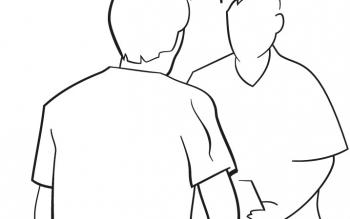Lead paragraph
Designers use contextual interviews by watching and listening to participants whilst working in their own environment, as opposed to being in a lab. Contextual interviews are used to understand better a certain group of people, their needs, emotions, expectations, environment, etc. as well as to reveal formal and informal networks and hidden issues of specific participants.
PREPARATION: 2-4 hours
DESIGN PHASE: Insights
DURATION: 1-3 hours per round
TEMPLATE OR GUIDELINES: Create own interview plan
FACILITATORS: 1 -3, design team members
RESOURCES: Notebook, photo camera, voice recorder, video camera
PARTICIPANTS: 5, Users, employees, or other stakeholders
EXPECTED OUTCOME: Field data such as notes, texts, photos, videos, audio recordings
By using contextual interviews, designers tap into participants everyday moments and subtleties, in their own environment. Designers conduct contextual interviews with users, employees, or any other relevant stakeholders in a situational context relevant to the design challenge.
STEPS
1.START:
Define the focus of what you are interested in and consider what you want to do with the findings (build personas, journey maps, system maps, etc.).
2.IDENTIFY:
Based on the selected focus area, define the criteria for selecting suitable interviewee-participants, considering not only who they are, but also when and where you will meet them.
3.PREPARE:
Think about how you will recruit your interviewee-participants, what expectations will be set up-front, how you will start and end, and how much time they are expected to dedicate to this activity. Write up the interview plan and a guide explaining what you want to find out.
4.CONDUCT:
After deciding the best times, length and depth of the contextual interview, immerse yourself into the interviewee-participant’s environment and start the interview by asking open and non-leading questions. Consider using the 5 Why’s tool, to reveal underlying motivations.
5.REPORT:
Write up key learnings right afterwards. Review all your data and highlight important issues whilst trying to find patterns within the data. Make a short summary that includes your key findings and examples from the data that exemplify these, such as quotes, photos, or videos.

